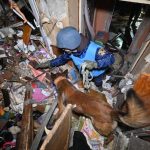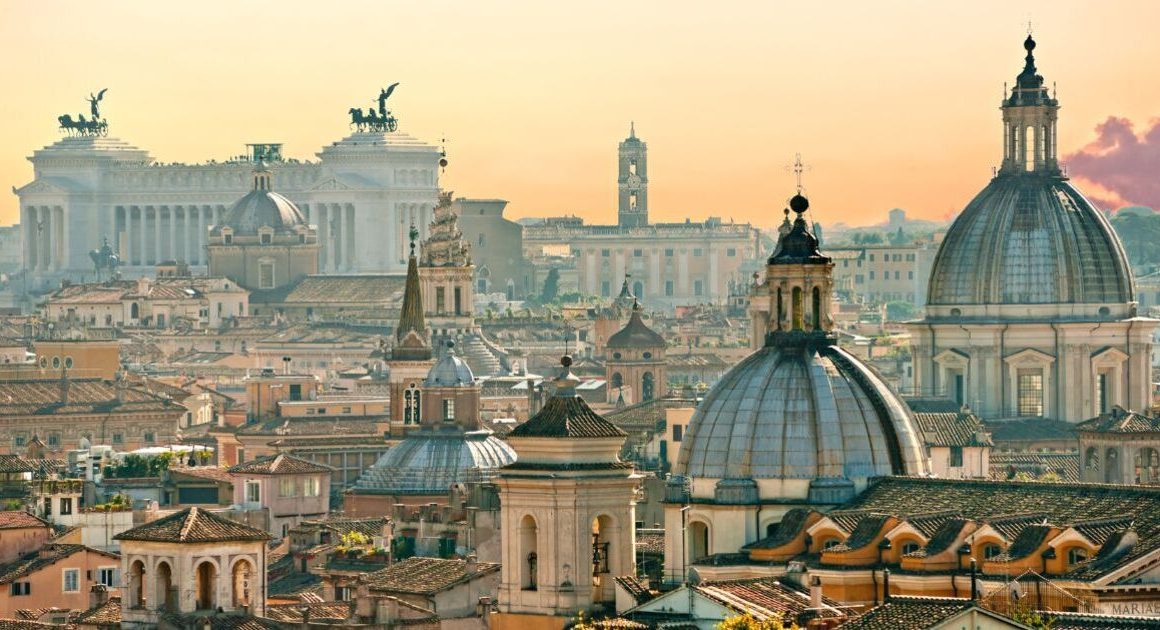When Hurricane Beryl smacked into Carriacou — part of the Caribbean nation of Grenada — in July, it virtually flattened the entire island, damaging every building in the community of 8,000 people.
Grenada had to rebuild, but it’s a daunting prospect.
In 2022, the country spent $51.9 million US just on making payments on its loans, and is currently in debt distress — a financial term that means it’s close to defaulting on its loans, or that they need restructuring. Paying for rebuilding will likely force Grenada to borrow more, putting it further in the hole.
Beryl was the earliest Category 5 hurricane to form in the Caribbean, a shock even in a region accustomed to large storms. It was fuelled by unusually warm ocean water and intensified in strength from Category 1 to 4 in just 24 hours, something that could be more likely due to climate change.
But for the island countries of the Caribbean, the trail of destruction left by tropical storms extends to government debt — and their ability to borrow the money to rebuild and recover.
It puts these vulnerable places in an ever-deepening cycle of expensive debt, which never quite meets the immense costs of worsening climate disasters, while at the same time mortgaging the countries’ futures.
But new proposals on the table at the COP29 climate summit in Baku, Azerbaijan — to use insurance to shield countries from debt distress and protect their delicate economies during natural calamities — could help them break free from this cycle.
What is a debt storm?
When Hurricane Maria hit the small Caribbean island country of Dominica in 2017, it caused $1.3 billion US in damage, more than double the country’s entire economy. Some 17,000 of the island’s 72,000 residents ended up leaving.
“That’s for one country, for one event in one year,” said Sasha Jattansingh, a climate diplomacy expert at Climate Analytics, a science and policy think-tank, who has advised Caribbean governments on climate finance.
“We’re seeing the scale of just one climate event and how that can decimate a country’s economic and social development gains over years.”
The next storm was the debt Dominica was forced to take on to start rebuilding. The debt load has continued to grow, and by 2022, the country was spending $30.2 million US a year just to service those external loans. It’s almost the same as the $32.4 million it received in climate financing — also mostly in the form of loans — so it can prepare for the next disaster.
In fact, some of the world’s poorest countries are sending billions in debt payments to G20 countries, with payments reaching $25.3 billion US in 2023, according to an analysis by the International Institute for Environment and Development (IIED), a think-tank working on climate finance for vulnerable nations.
How do countries get trapped?
Climate research suggests hurricanes are going to get more intense due to human-caused global warming. That means more damage for Caribbean islands, and more costs.
“The timelines for these disasters are getting shorter,” Jattansingh said. “You have a cycle of rebuilding, reconstruction, long-term recovery and so on — all for another event to happen.”
This leads to countries turning to external lenders again — but at rising interest rates, because the storms that destroy homes and infrastructure also hurt a country’s creditworthiness.
Ritu Bhardwaj, principal researcher at IIED, calls it “a vicious cycle.”
“Because [these countries] are already in a debt deluge, no matter how much loan they take, their loan comes at a higher interest. And no matter how much they want to crawl out of that hole, they still will never be able to rise up — unless you give them a helping hand, take them out and bring them on a level playing field.”
Over 40 per cent of Small Island Developing States (SIDS), a group of island countries around the world facing similar climate and development challenges, are nearing or already in debt distress — diverting precious money away from services like health and education to stave off bankruptcy.
Is there a way out?
As climate disasters multiply, the SIDS countries want a reform of the global financial system that would bring them out of this debt cycle.
In 2020, the G20 launched a new framework for countries in debt distress to restructure their loans with their lenders. Zambia, in southern Africa, was the first country to negotiate under this process, and it took nearly four years to reach agreements with all its creditors.
But that’s not something many small island nations can do, due to their size.
“You go to a SIDS country, the entire finance ministry is made up of three to four people,” Bhardwaj said. “The capacity [to negotiate] in itself is quite constrained.”
IIED has proposed a collective process to negotiate debt relief and restructuring, where nations can negotiate as a group on financial issues — which can be very complex.
“We don’t want to go country by country by country, because it’s a cost to the country as well,” Bhardwaj said.

Bhardwaj says it’s important to “layer” various forms of financial relief on top of each other, to form multiple walls of protection for highly vulnerable island countries.
One proposal: expanding insurance for countries when they’re hit by natural disasters.
The Caribbean Catastrophe Risk Insurance Facility is a “risk pool” launched in 2007 to help countries in the region get insurance for natural disasters. Countries buy coverage for disasters like hurricanes, and the insurance pays out if a storm of a particular intensity happens, according to the insurance policy.
By pooling multiple countries’ risk, CCRIF can offer insurance policies that are much cheaper than if one country went out and bought insurance on its own.
Grenada held such a policy with CCRIF and was paid out $44 million right after Beryl to help repair electricity lines, hospitals, ports and other infrastructure, as well as cover losses in agriculture and fisheries.
“When a predefined trigger event occurs, countries are able to receive rapid payouts to help them address immediate needs,” Jattansingh said. “And that could include debt repayment relief and also support recovery efforts.”
Bhardwaj says unlike a country with a large land mass, like Canada, when a storm hits a Caribbean island, it typically hits the entire country. A single storm can also bring the entire economy, which might be dependent on tourism and agriculture, to a standstill.
So the insurance coverage should reflect that. She proposes insuring a country’s entire economy, so an impacted nation can protect its GDP even as key economic sectors come to a halt, and not fall further behind on meeting its debt obligations.
IIED estimates that if the insurance risk of the SIDS countries was pooled, the cost to protect their entire GDP would be US$106.71 million a year.
Who’s responsible?
Bhardwaj says the cost of those insurance premiums should not fall on small island countries, especially since they have contributed little to the carbon emissions that have caused the climate crisis.
She proposes that money could come from global climate finance — and in particular the loss and damage fund, which was officially established at the COP28 climate conference in Dubai last year to compensate developing countries for the damage caused by climate disasters.
A sticking point last year was who would pay into it. Under the UN Framework Convention on Climate Change, the global convention that guides climate action, high-income industrialized countries — such as the U.S, Canada and those in Europe — are obliged to provide financial resources to developing countries to fight and adapt to climate change.
But rich countries argued other emerging economies like China, now the world’s largest carbon emitter, should also pay up.
The debate over climate finance is being hashed out at COP29 right now. Countries had pledged about $700 million US to the loss and damage fund, but this would be far short of the total losses suffered by low-income countries, given that just a single storm in a single small country can cause billions of dollars in damage.
The loss and damage fund could, however, fund insurance programs that start getting countries out of their cycle of debt.
“These countries are not on a level playing field,” Bhardwaj said.
“The global financial architecture is very biased and completely skewed to favour the richer nations, and the poorer countries are becoming poorer and poorer. There is no way they can really graduate.”
With files from Anand Ram











